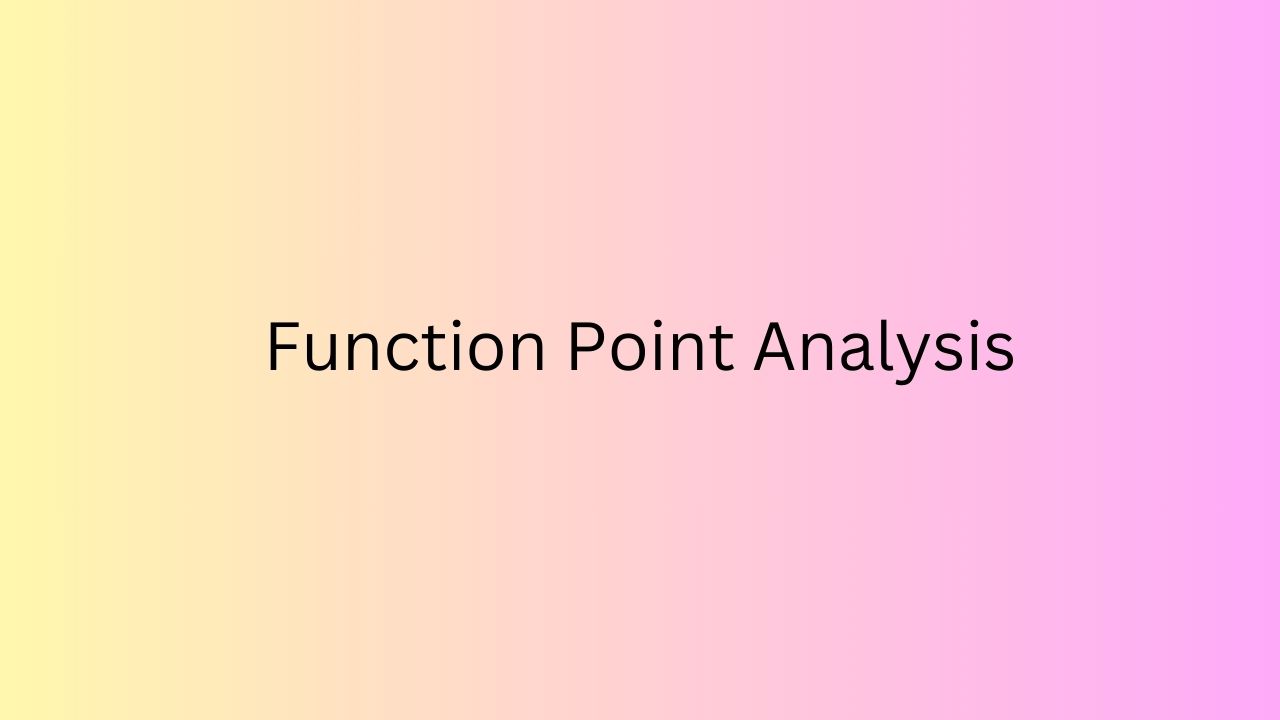
Function Point Analysis #
About Course
Measurement is the basis of Management. It is easy to measure physical things because of their scale for measurement, unit of measurement, the technique of measurement exists and people know them either intuitively or there is a training available. But measuring the size of the software is always a challenge for anybody including project sponsors, project managers, project team, vendors, and regulators. In the last 6 decades, many techniques have been developed but each technique has its own limitation and complexity. Function Point Analysis (FPA) is one of the widely known, accepted, and used techniques for software size measurement. This two days workshop helps participants in understanding different components of software estimation, techniques of estimation, and how to apply this technique to various types of software projects like new product development, supporting a legacy application, enhancing new features in an n-tier architecture banking application, etc.
Based on the organization’s need other function point techniques like COSMIC FP can be included and the duration of training can be negotiated.
This training is based on Counting Practice Manual 4.2 of The International Function Point Users Group (IFPUG)
Why this Course #
This question always puzzles software project stakeholders that how to estimate the size of a software project. What estimation technique should be used for product revamp or enhancement or support or new-development project? This workshop helps you get answers to these questions and learn how to apply those techniques.
Prerequisite #
Although there is no prerequisite for this course. But if you have 2-3 experience in at least one business domain and finishing a project from start to end you will be able to appreciate every concept in the workshop.
Course Outline #
History & Concepts #
Elements of good estimating practices #
- Software Estimation Related Risk
- What is Function Point?
- History of Function Point
- Application of Function Point
- Metrics related to Function Point
- Defining Boundaries
Understanding Elements of FPA #
- DET: Data Element Type
- RET: Record Element Type
- FTR: File Type Reference
- Data Function Types
- Identifying Internal Logical File (ILF)
- Identifying External Interface Files (EIF)
- Transaction Function Types
- Counting External Inputs (EI)
- Counting External Outputs (EO)
- Counting External Inquiries (EQ)
- Unadjusted Function Point Count (UFPC)
- Understanding General System Characteristics
- Value Adjustment Factors (VAF)
- Adjust Function Point Count (AFPC)
- Productivity
- Adding support effort
- Understanding efforts estimation
- Understanding work contour and establishing a relationship between effort & staffing
Let us Count (A case study) #
- Count Internal Logical Files (ILF) using ILF Table
- Count External Interface Files (EIF) using EIF Table
- Count External Inputs (EI) using EI Table
- Counting External Outputs (EO) using EO Table
- Counting External Queries (EQ) using EQ Table
- Calculate VAF using General System Characteristics
- Let us benchmark Productivity
- Let us Estimate Efforts
- Let us Developing High-Level Staffing Plan
Duration #
2 Days workshop
Audience #
- Software Project Manager
- Program Managers
- Sponsor of Software Project
- Quality Manager
- Software Architect
- Business Analysis
- Team Leaders
- Account Managers
- Sales Manager
Delivery Method #
It is a highly interactive session with group exercises. The exercises are based on case-study and discussions are based on current practices versus recommendations from the IFPUG counting practice manual.
Workshop Deliverables #
- Learn how to estimate the size of various types of software projects
- Learn how to estimate software size using CPM 4.2 manual (IFPUG)
- Learn how to factor complexity of the project in software size
- 16 Hours PDU Certificate (Can be used by PMP Certified credential holder for renewing their certificate)
- Function Point Counting Template


Comments: